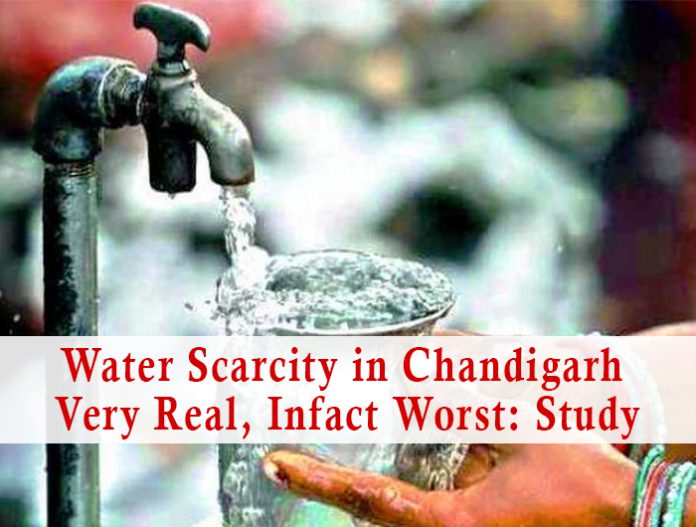Chandigarh is among 9 Indian states and union territories where “water stress” is “extremely high”, as per a survey by the World Resource Institute. WRI is a US-based think tank advocating sustainability. The study has assessed condition of water scarcity in 17 countries. Shockingly enough, India, which receives maximum rainfall amongst them all, figures at 13th position.
Not just global ranking, the WRI has studied at state level too. The City Beautiful is followed by Haryana, Rajasthan, Uttar Pradesh, Punjab, Gujarat, Uttarakhand, Madhya Pradesh, and Jammu and Kashmir. These states and union territories scored between four and five on a scale of zero to five. Five being the worst.
In Punjab, water table is being depleted. The state is known as the breadbasket of India and farmers are worried.
What is Water Stress?
As per the study, countries with “water stress” means that they are running out of ground and surface water.
Findings of the WRI study
The following are the major findings:
- Water Crisis in India
The following have led to acute water scarcity in large parts of the country:
- More than 80% of available ground water, on average, has been withdrawn. Around 70% of it is used for agriculture.
- In 2019, already more than 500 million people living in at least 10 Indian states were reportedly affected by crippling drought situations. Sixth largest city, Chennai, ran out of water last month.
- Water mismanagement and overexploitation has slowly and steadily taken India into its grip.
2. Other Nations
In the survey, Qatar, Israel, and Lebanon are first, second and third, respectively. Pakistan stands on the 14th.
How Water Stress Levels Calculated
Data from 1960 to 2014 has been accounted for. As per reports, “water stress levels” are calculated by dividing total available water by volume withdrawn.
Chandigarh Water Supply Statistics
A total of 87 million gallons of water per day (MGD) is received in Chandigarh.
The following resources make up for this total requirement:
- 67 MGD is received from the Kajauli waterworks.
- 20 MGD is received through the city’s own 207 tubewells.
- 16 MGD is the peak-time requirement.
- Presently, 29 MGD of additional water supply is being worked upon.
The report’s findings are a wake up call for the administration and citizens. It’s high time we mend our ways of carelessly wasting water and practice water conservation. With monsoons going on, water harvesting must be the top priority of each one of us.
News Source: The Tribune, BBC
Image Source: Google Images





















